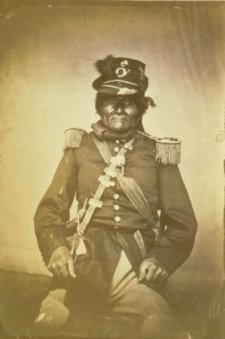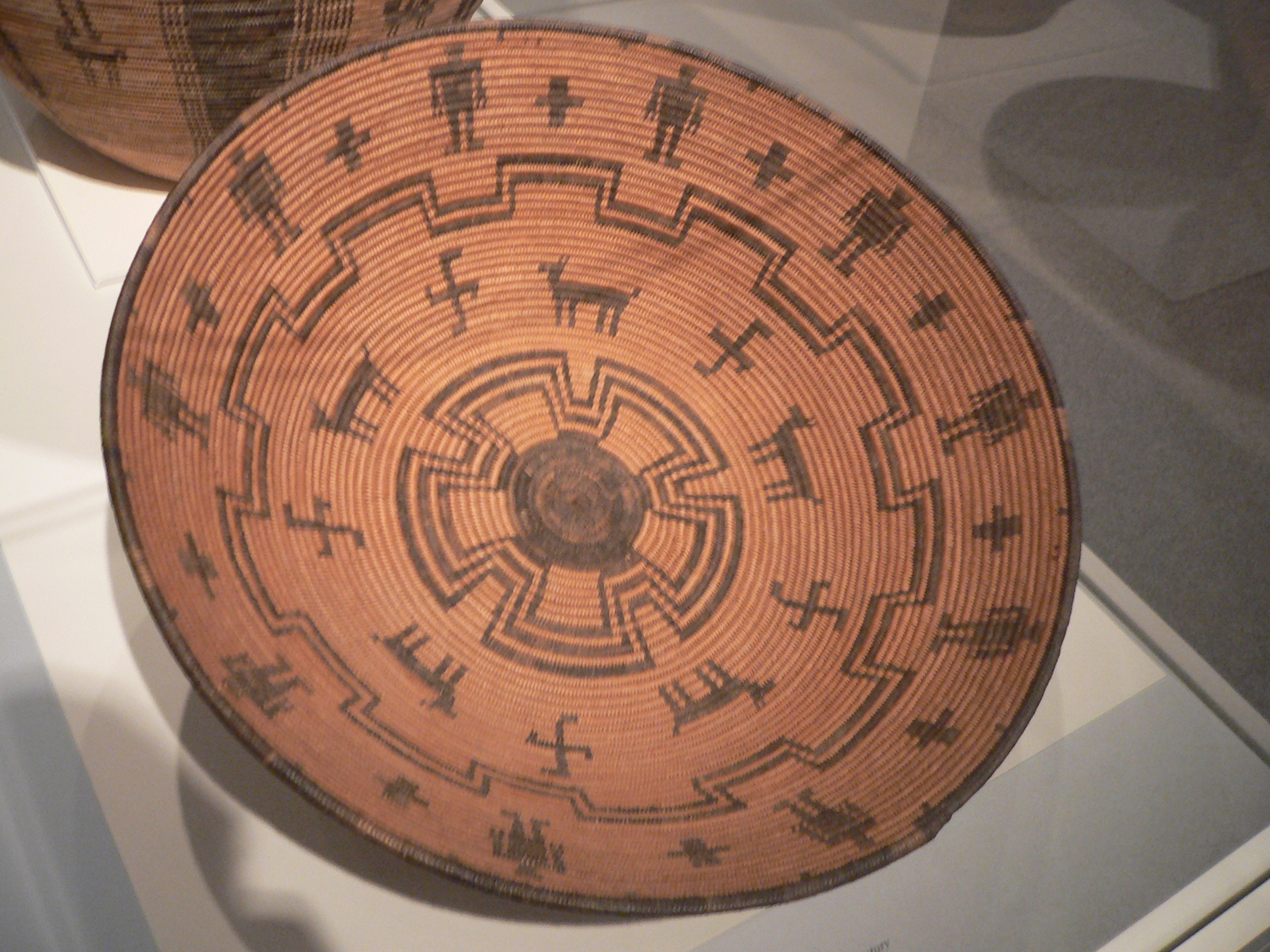|
Ohatchecama
Ohatchecama (Yavapai: "Striking Enemy"; also known as Ocho-cama and Ah-oochy Kah-mah, among other variations) was a Tolkepaya Yavapai leader who was arrested for taking part in the Wickenburg Massacre The Wickenburg Massacre was the November 5, 1871, murder of six stagecoach passengers en route westbound from Wickenburg, Arizona Territory, headed for San Bernardino, California, on the La Paz road. Massacre Around mid-morning, about six .... Fighting broke out between soldiers as they attempted to arrest the Yavapai leader, and Ohatchecama's brother was killed. The next day, Ohatchecama was seriously wounded while trying to escape and was reported dead, but survived his injuries and later turned up at Fort Date Creek. N0tes References * * *Books of the Southwest: The Wickenburg Massacre {{DEFAULTSORT:Ohatchecama Native American leaders Yavapai 19th-century American people ... [...More Info...] [...Related Items...] OR: [Wikipedia] [Google] [Baidu] |
Ohatchecama
Ohatchecama (Yavapai: "Striking Enemy"; also known as Ocho-cama and Ah-oochy Kah-mah, among other variations) was a Tolkepaya Yavapai leader who was arrested for taking part in the Wickenburg Massacre The Wickenburg Massacre was the November 5, 1871, murder of six stagecoach passengers en route westbound from Wickenburg, Arizona Territory, headed for San Bernardino, California, on the La Paz road. Massacre Around mid-morning, about six .... Fighting broke out between soldiers as they attempted to arrest the Yavapai leader, and Ohatchecama's brother was killed. The next day, Ohatchecama was seriously wounded while trying to escape and was reported dead, but survived his injuries and later turned up at Fort Date Creek. N0tes References * * *Books of the Southwest: The Wickenburg Massacre {{DEFAULTSORT:Ohatchecama Native American leaders Yavapai 19th-century American people ... [...More Info...] [...Related Items...] OR: [Wikipedia] [Google] [Baidu] |
Tolkepaya
The Yavapai are a Native American tribe in Arizona. Historically, the Yavapai – literally “people of the sun” (from ''Enyaava'' “sun” + ''Paay'' “people”) – were divided into four geographical bands who identified as separate, independent peoples: the Ɖulv G’paaya, or Western Yavapai; the Yaavpe', or Northwestern Yavapai; the Gwev G’paaya, or Southeastern Yavapai; and the Wiipukpaa, or Northeastern Yavapai – Verde Valley Yavapai. Another Yavapai band, which no longer exists, was the Mađqwarrpaa or "Desert People." Its people are believed to have mixed with the Mojave and Quechan peoples. The Yavapai have much in common with their linguistic relatives to the north, the Havasupai and the Hualapai. Often the Yavapai were mistaken as Apache by American settlers, who referred to them as "Mohave-Apache," "Yuma-Apache," or "Tonto-Apache". Before the 1860s, when settlers began exploring for gold in the area, the Yavapai occupied an area of approximately 20,000& ... [...More Info...] [...Related Items...] OR: [Wikipedia] [Google] [Baidu] |
Yavapai People
The Yavapai are a Native American tribe in Arizona. Historically, the Yavapai – literally “people of the sun” (from ''Enyaava'' “sun” + ''Paay'' “people”) – were divided into four geographical bands who identified as separate, independent peoples: the Ɖulv G’paaya, or Western Yavapai; the Yaavpe', or Northwestern Yavapai; the Gwev G’paaya, or Southeastern Yavapai; and the Wiipukpaa, or Northeastern Yavapai – Verde Valley Yavapai. Another Yavapai band, which no longer exists, was the Mađqwarrpaa or "Desert People." Its people are believed to have mixed with the Mojave and Quechan peoples. The Yavapai have much in common with their linguistic relatives to the north, the Havasupai and the Hualapai. Often the Yavapai were mistaken as Apache by American settlers, who referred to them as "Mohave-Apache," "Yuma-Apache," or "Tonto-Apache". Before the 1860s, when settlers began exploring for gold in the area, the Yavapai occupied an area of approximately 20,000& ... [...More Info...] [...Related Items...] OR: [Wikipedia] [Google] [Baidu] |
Yavapai
The Yavapai are a Native American tribe in Arizona. Historically, the Yavapai – literally “people of the sun” (from ''Enyaava'' “sun” + ''Paay'' “people”) – were divided into four geographical bands who identified as separate, independent peoples: the Ɖulv G’paaya, or Western Yavapai; the Yaavpe', or Northwestern Yavapai; the Gwev G’paaya, or Southeastern Yavapai; and the Wiipukpaa, or Northeastern Yavapai – Verde Valley Yavapai. Another Yavapai band, which no longer exists, was the Mađqwarrpaa or "Desert People." Its people are believed to have mixed with the Mojave and Quechan peoples. The Yavapai have much in common with their linguistic relatives to the north, the Havasupai and the Hualapai. Often the Yavapai were mistaken as Apache by American settlers, who referred to them as "Mohave-Apache," "Yuma-Apache," or "Tonto-Apache". Before the 1860s, when settlers began exploring for gold in the area, the Yavapai occupied an area of approximately 20,000& ... [...More Info...] [...Related Items...] OR: [Wikipedia] [Google] [Baidu] |
Yavapai Language
Yavapai is an Upland Yuman language, spoken by Yavapai people in central and western Arizona. There are four dialects: Kwevkepaya, Wipukpaya, Tolkepaya, and Yavepe. Linguistic studies of the Kwevkepaya (Southern), Tolkepaya (Western), Wipukepa (Verde Valley), and Yavepe (Prescott) dialects have been published (Mithun 1999:578). Yavapai was once spoken across much of north-central and western Arizona, but is now mostly spoken on the Yavapai reservations at Fort McDowell, the Verde Valley and Prescott. Geographic distribution The rate of mutual comprehension between Yavapai and Havasupai–Hualapai is similar to that between Mohave and Maricopa (Biggs 1957). Warren Gazzam, a Tolkapaya speaker, reported that "you know they (Hualapais) speak the same language as we do, some words or accents are a little different". Due to extensive cultural interchange, many Yavapai were once bilingual in Apache, and some Apache were bilingual in Yavapai. Unlike in Havasupai and Hualapai, po ... [...More Info...] [...Related Items...] OR: [Wikipedia] [Google] [Baidu] |
Wickenburg Massacre
The Wickenburg Massacre was the November 5, 1871, murder of six stagecoach passengers en route westbound from Wickenburg, Arizona Territory, headed for San Bernardino, California, on the La Paz road. Massacre Around mid-morning, about six miles from Wickenburg, the stagecoach was attacked by 15 Yavapai warriors, who were sometimes mistakenly called Apache-Mohaves, from the Date Creek Reservation. Six men, including the driver, were shot and killed. Among them was Frederick Wadsworth Loring, a young writer from Boston working as a correspondent for '' Appleton's Journal'' and assigned to cover a cartographic expedition led by Lieutenant George Wheeler. One male passenger, William Kruger, and the only female passenger, Mollie Sheppard, managed to escape. According to Kruger, Sheppard eventually died of the wounds she received. Memorial plaques have been installed near the site several times, including in 1937 by the Arizona Highway Department and in 1948 and 1988 by the Wicke ... [...More Info...] [...Related Items...] OR: [Wikipedia] [Google] [Baidu] |
Fort Date Creek
Fort Date Creek, also known as Camp McPherson or Camp Date Creek, was a United States Army post established in 1867 sixty miles south of Prescott, Arizona. It was built to safeguard American settlers in Yavapai County. History Fort Date Creek is located along Date Creek near the OX Ranch and was originally named Camp McPherson for General James B. McPherson at its founding on January 23, 1867. The fort was initially a temporary base protecting the road from La Paz to Prescott during the Hualapai War. Just after being founded, it was abandoned for a new post named Camp Skull Valley, twenty-five miles to the north in March 1867. On May 11, 1867, the fort was reopened and renamed Camp Date Creek and later Fort Date Creek. The fort itself was moved a short distance twice, but always remained along the creek. In 1868 the garrison included two infantry companies from the 14th Regiment and beginning in 1869, the area became an important center for fighting hostile native Americ ... [...More Info...] [...Related Items...] OR: [Wikipedia] [Google] [Baidu] |
Native American Leaders
Native may refer to: People * Jus soli, citizenship by right of birth * Indigenous peoples, peoples with a set of specific rights based on their historical ties to a particular territory ** Native Americans (other) In arts and entertainment * Native (band), a French R&B band * Native (comics), a character in the X-Men comics universe * ''Native'' (album), a 2013 album by OneRepublic * ''Native'' (2016 film), a British science fiction film * ''The Native'', a Nigerian music magazine In science * Native (computing), software or data formats supported by a certain system * Native language, the language(s) a person has learned from birth * Native metal, any metal that is found in its metallic form, either pure or as an alloy, in nature * Native species, a species whose presence in a region is the result of only natural processes Other uses * Northeast Arizona Technological Institute of Vocational Education (NATIVE), a technology school district in the Arizona portion of ... [...More Info...] [...Related Items...] OR: [Wikipedia] [Google] [Baidu] |




